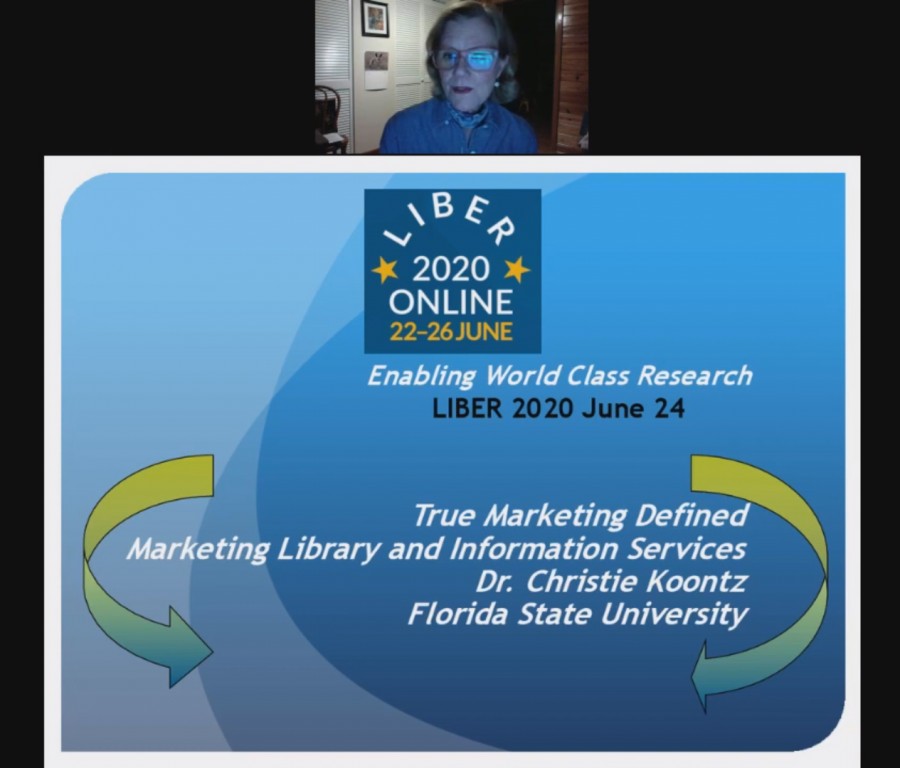True Marketing Defined
18 August 2020
Dr. Christie Koontz, Management & Marketing Section Consultant, recently presented the keynote address True Marketing Defined at LIBER 2020.
- View the complete presentation here.
- View presentation slides here.
- Corresponding exercises can be found here.
 About the Presentation
About the Presentation
Information professionals are natural marketers whether we think of ourselves in this way or not. Successful marketers meet the needs of customers in timely, convenient, and useful ways—and in the process make customers satisfied. Our professions strive for this daily, and knowledge of systematic marketing helps puts these efforts into practice. A four-step marketing model facilitates understanding the presentation, “True Marketing Defined.”
Marketing research is finding out all you can about your market(s) whether they be actual or potential customers. Market segmentation is based upon the marketing research and assumes that markets are heterogeneous—that is, consisting of diverse groups with different demographics, interests, lifestyles, and needs. Marketing mix strategies are developed with the consideration that most organizations are limited in resources and therefore must allocate carefully developing product, price, place, and promotion of materials, services, and programs, based upon the research and delivered to various segments. Program-level evaluation assesses the results of marketing efforts.
Over the last four decades, libraries, archives, and museums and supporting professional organizations advocate and produce evaluation measures due to the need for accountability amidst disruptive and changing times, and competition for dwindling public and private funds.
Dr. Christie Koontz
Dr. Koontz is a recently retired and current adjunct faculty member at Florida State University (FSU) and San Jose State University (SJSU), USA. Her academic training and work life are in communications, including journalism, advertising, and marketing. Koontz pioneered the critical need to understand the geographic and spatial nature of individual libraries, by collecting data that describe people who use a single library, and what materials and services they use, and approximating the distance they will travel for library services.